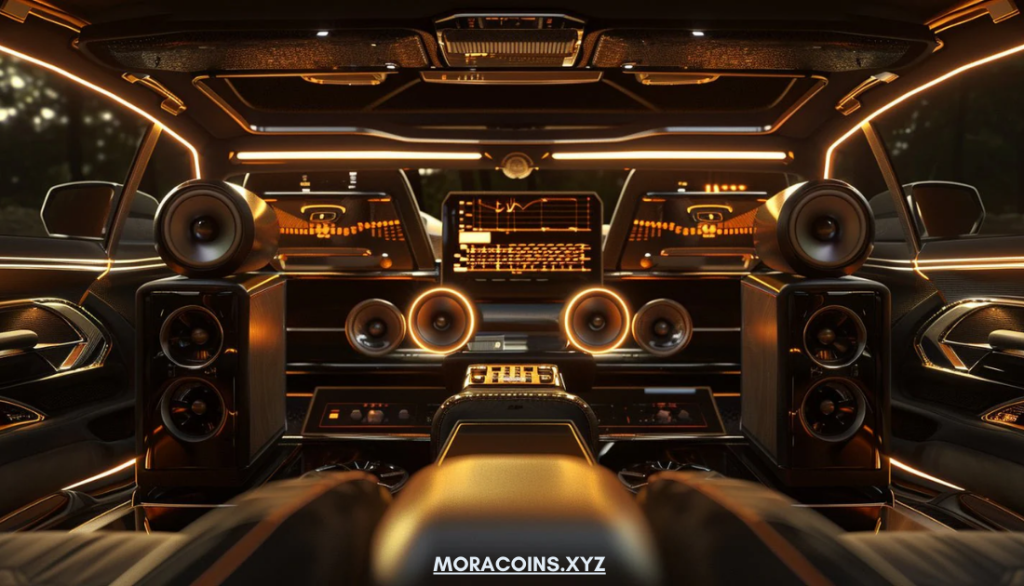Blog
Upgrade Car Sound: The Best Ways to Transform Your Driving Experience
For car enthusiasts and audiophiles alike, a high-quality car audio system can make every drive more enjoyable. While factory-installed sound systems offer basic functionality, upgrading the audio setup can create a richer, more immersive experience. This guide will walk you through the most effective ways to upgrade your car’s sound, covering everything from speakers to amplifiers and soundproofing.
Why Upgrade Your Car Sound System?
An upgraded sound system doesn’t just enhance the quality of your music. It can also improve clarity for hands-free calls, help with navigation instructions, and boost the overall ambiance in your vehicle. Factory sound systems often lack depth, clarity, and volume capacity. By upgrading, you gain more control over sound quality and make every journey feel a little more luxurious.
Assess Your Current Sound System
Before making any upgrades, evaluate your car’s current audio setup. Take note of its strengths and weaknesses. Listen carefully to determine what areas could be improved, such as bass, treble, or volume. This assessment can help you decide which components to focus on, saving both time and money.
Start with Speaker Upgrades
Speakers are the core of any sound system. Replacing factory speakers with higher-quality aftermarket options is one of the most impactful upgrades you can make.
Component Speakers vs. Coaxial Speakers
Component speakers, which include separate woofers and tweeters, provide better sound quality because each part is optimized for specific frequencies. Coaxial speakers, on the other hand, are more compact and easier to install, making them a good option for those looking for a quick upgrade.
Choosing the Right Material
Speaker materials affect sound clarity and durability. Look for materials like polypropylene for woofers, as it’s resistant to moisture, and silk or textile blends for tweeters, which produce smoother highs. Quality materials will ensure that your sound upgrade lasts longer while providing better performance.
Add a Subwoofer for Deeper Bass
Adding a subwoofer is a fantastic way to enhance bass response. Subwoofers focus on low frequencies, which standard speakers often struggle to reproduce. If you enjoy bass-heavy music, a subwoofer will add depth and richness to your listening experience.
Consider Subwoofer Size and Placement
The size of the subwoofer impacts the bass level. Larger subwoofers can produce deep bass, but they require more space. Smaller subwoofers fit in compact spaces and still offer a respectable bass boost. Think about where the subwoofer will go – many choose to place it in the trunk to save interior space.
Amplifiers for Optimal Performance
A powerful subwoofer may need an amplifier to perform at its best. The amplifier boosts the signal, allowing the subwoofer to produce cleaner and more powerful bass. This combination can elevate your entire sound system, giving you greater control over the volume and bass levels.
Install an Amplifier for Clarity and Volume
Adding an amplifier is crucial if you’re looking for clear, loud sound without distortion. Amplifiers provide power to the speakers, helping them perform better and allowing you to play music at higher volumes without sacrificing quality.
Matching Amplifiers to Speakers
It’s essential to match the amplifier’s output power to your speakers. An underpowered amplifier can lead to distortion, while an overpowered one may damage the speakers. Pay attention to RMS (Root Mean Square) ratings for both the amplifier and speakers to ensure compatibility.
Types of Amplifiers
There are different types of amplifiers to consider. Mono amplifiers are great for powering a subwoofer, while multi-channel amplifiers can power multiple speakers, providing a balanced sound. Choose an amplifier based on your specific needs and the layout of your car’s audio system.
Enhance Sound Quality with Soundproofing
Noise from the road, engine, and wind can interfere with your audio experience. Soundproofing your vehicle can significantly improve sound quality by reducing unwanted noise. This allows you to enjoy your upgraded sound system without distractions.

Adding Sound-Deadening Mats
Sound-deadening mats, like Dynamat or similar products, can be applied to the car’s doors, floor, and trunk. These mats absorb vibrations and prevent noise from entering the cabin. As a result, the audio from your upgraded system sounds cleaner and more immersive.
Consider Door Panel Insulation
Another effective method for soundproofing is insulating the door panels. This can prevent vibrations and rattling, especially at higher volumes. Door insulation is relatively easy to install and makes a noticeable difference in sound clarity.
Upgrade the Head Unit for Better Control
The head unit, also known as the stereo or receiver, is the control center of your car’s audio system. Many factory head units have limited features, so upgrading to an aftermarket option can give you greater control and functionality.
Enhanced Connectivity
Look for a head unit that supports Bluetooth, Apple CarPlay, or Android Auto. These features allow you to connect your phone wirelessly, giving you access to your favorite streaming services, navigation apps, and hands-free calls. Enhanced connectivity can make every drive more convenient.
Improved Sound Adjustments
Aftermarket head units often come with equalizers, balance controls, and other sound adjustment options. This flexibility allows you to fine-tune the sound to your liking, achieving a customized listening experience.
Tuning and Customizing Your Sound System
Once all the components are installed, tuning the system is essential for optimal performance. Many aftermarket head units and amplifiers come with tuning features, allowing you to adjust frequencies, bass, and treble levels.
Equalization (EQ)
An equalizer lets you adjust specific frequency ranges to suit your musical taste. Experimenting with different EQ settings can help you achieve the ideal sound balance. For instance, boosting low frequencies can enhance bass-heavy tracks, while reducing high frequencies can prevent harshness.
Crossover Settings
Crossovers direct frequencies to the appropriate speakers, ensuring that each component handles only the frequencies it’s designed for. Setting crossovers properly can prevent distortion and protect your speakers from damage, enhancing overall sound quality.
Testing and Maintenance
After upgrading and tuning your sound system, testing it with a variety of music genres can help you evaluate its performance. Pay attention to how each component contributes to the overall sound, ensuring that everything works harmoniously.
Regular Maintenance
Maintaining your audio system is vital for long-lasting performance. Clean dust off the speakers, check connections regularly, and make sure there’s no moisture in any part of the system. Well-maintained components are likely to provide consistent quality and durability.
Final Thoughts
Upgrading your car’s sound system can transform your driving experience, offering you clear, powerful, and immersive audio. By focusing on key elements like speakers, subwoofers, amplifiers, and soundproofing, you can create a customized setup that suits your preferences. Remember to carefully match components, tune your system, and perform regular maintenance to enjoy high-quality sound on every drive. With the right upgrades, your car’s audio system will deliver a new level of entertainment and satisfaction on the road.


